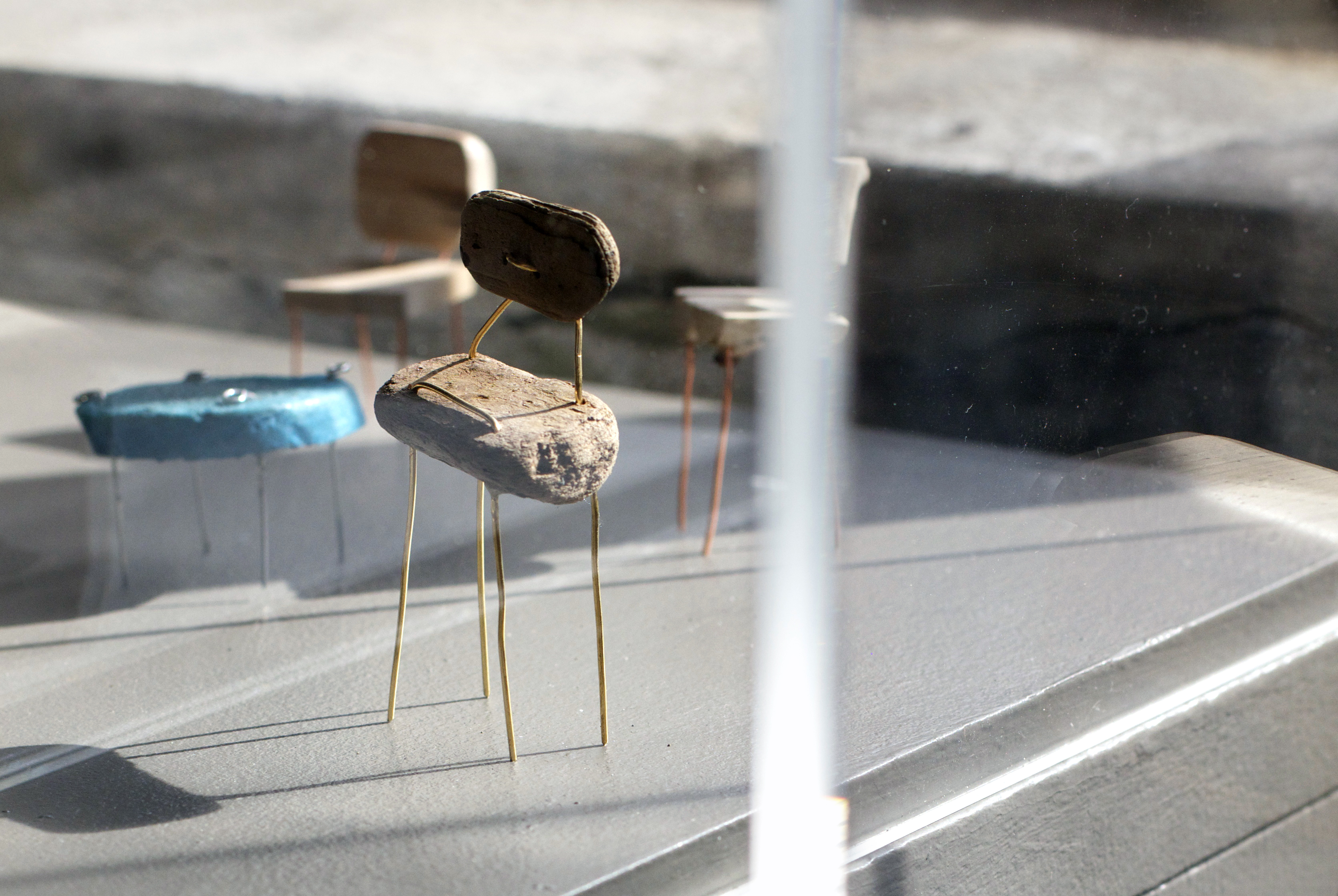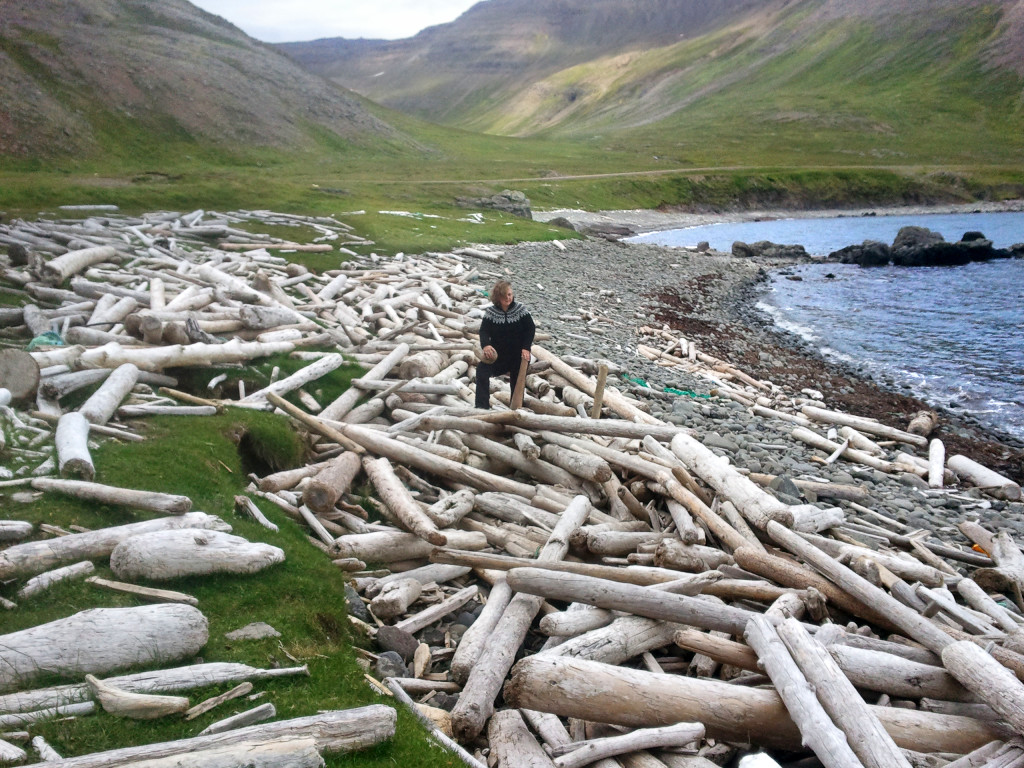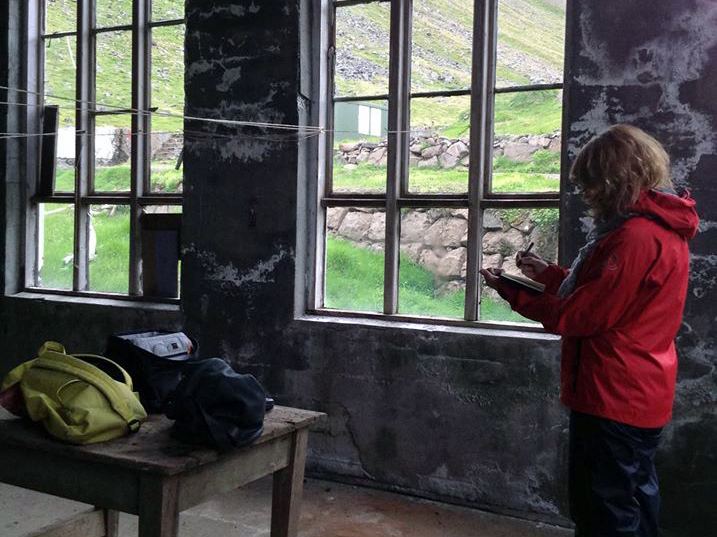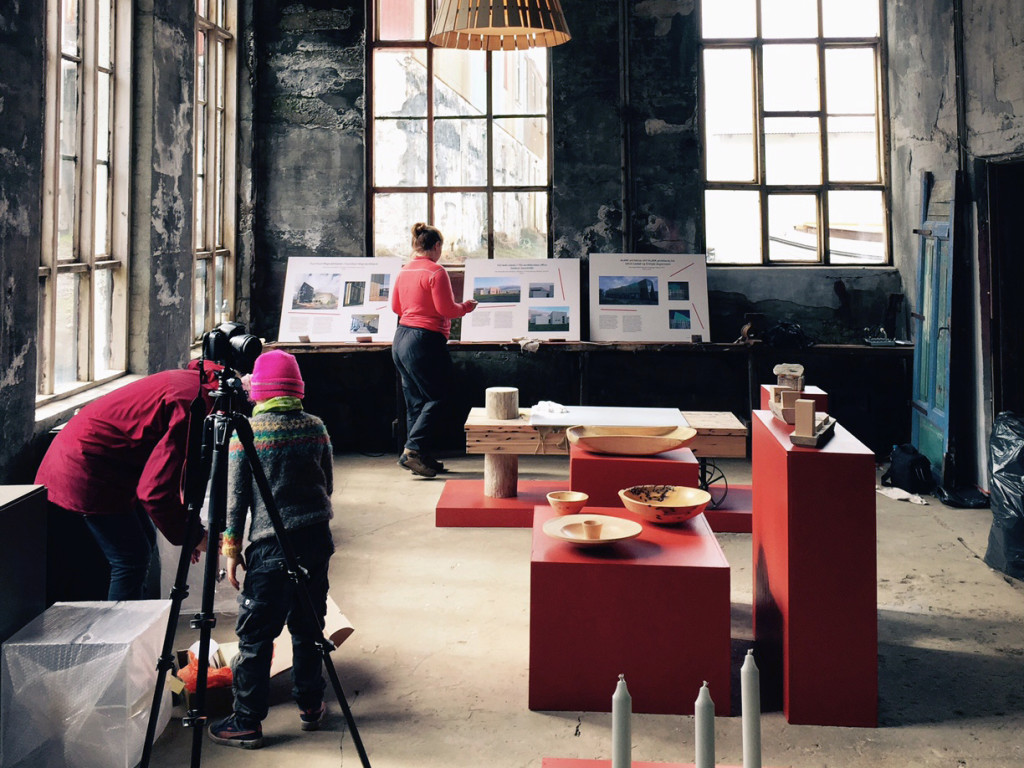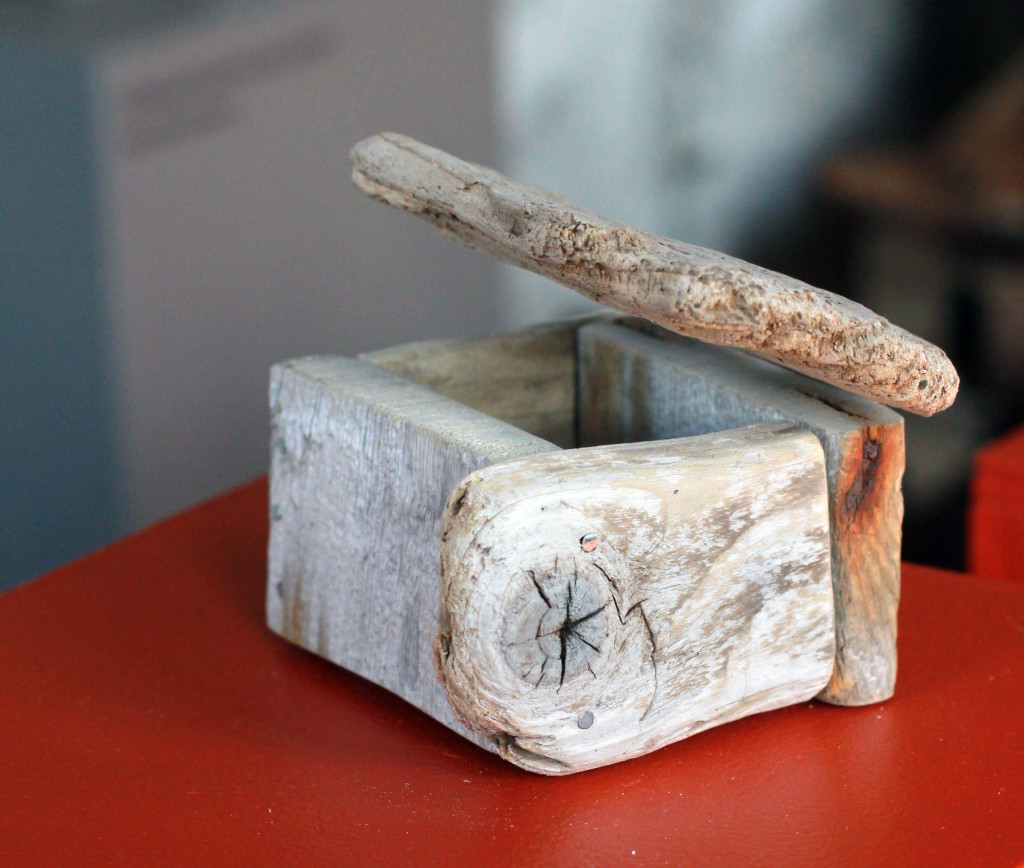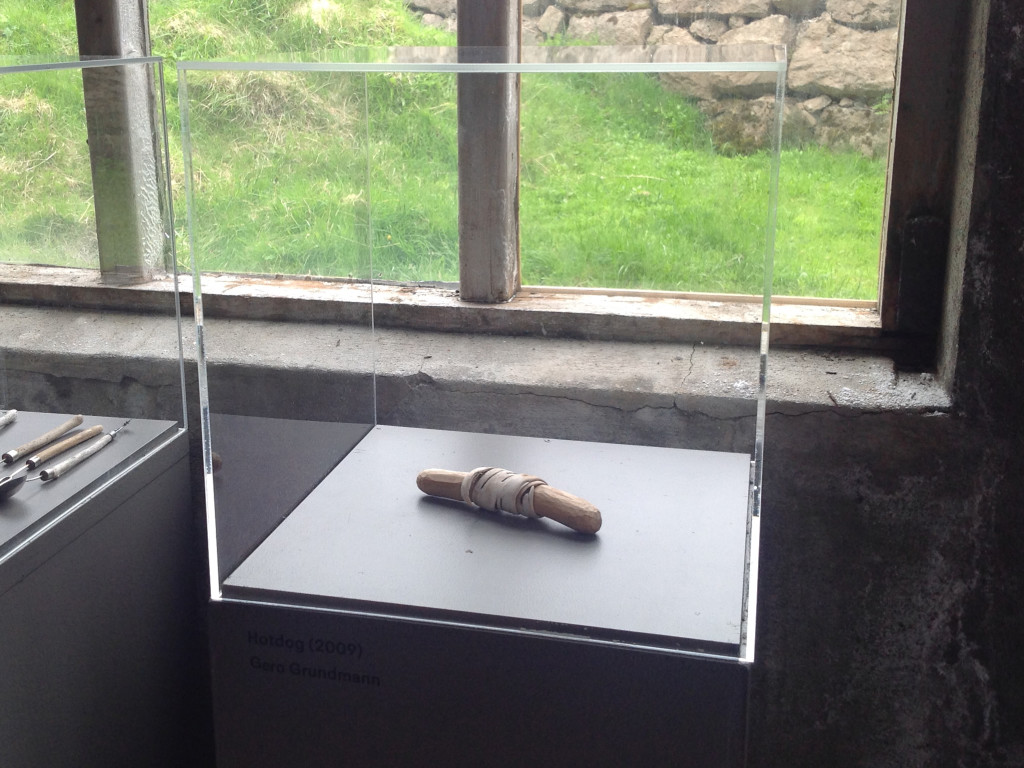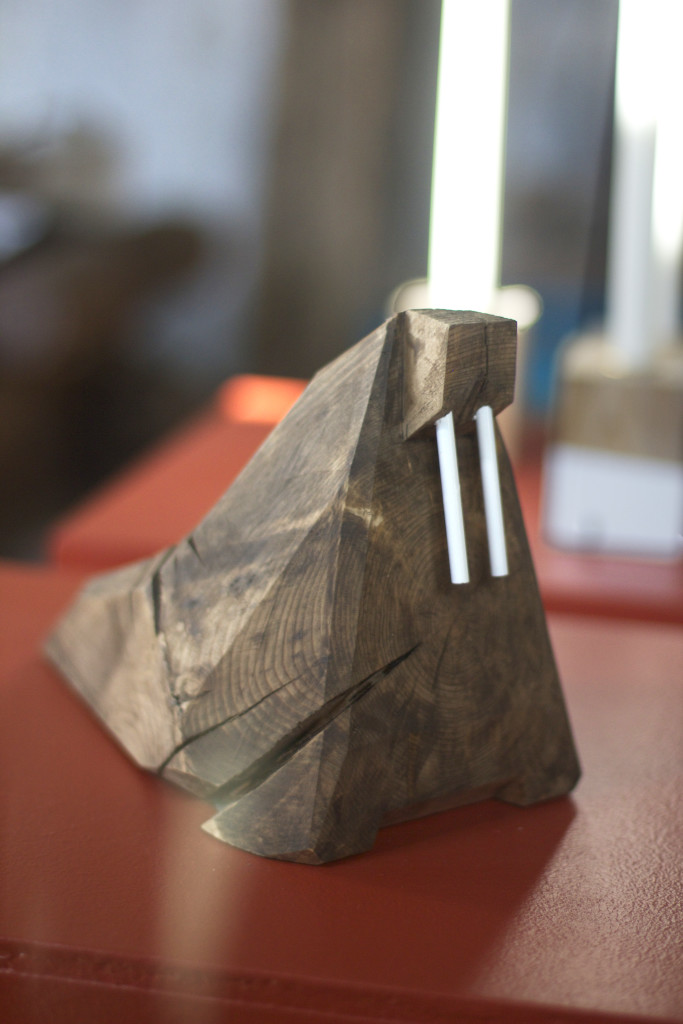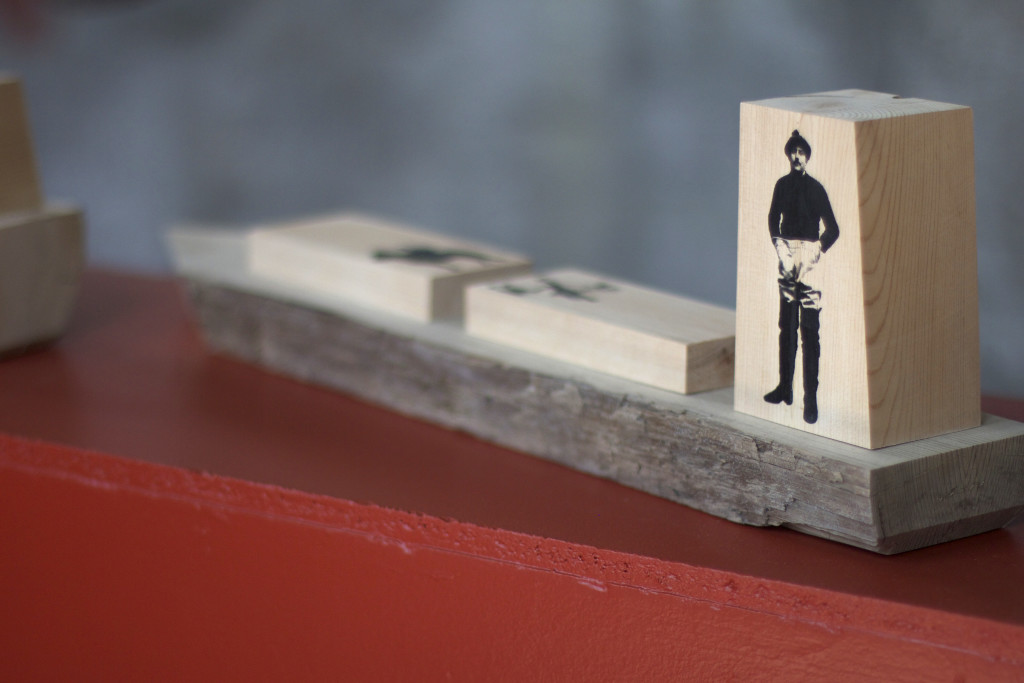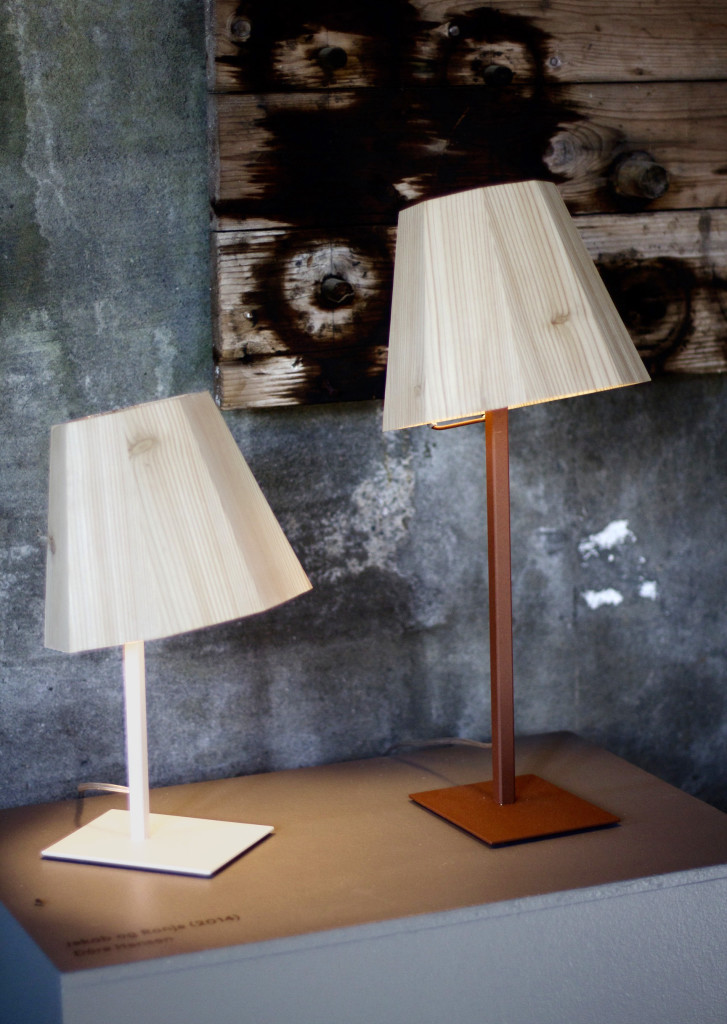Driftwood is the subject of an exhibition in Djúpavík at Strandir, one of the most enchanting places in the Westfjords of Iceland. The exhibition, HIDDEN WOOD – Driftwood in design, focuses on the diverse opportunities hidden in Icelandic driftwood, on an island that is largely devoid of wooden areas.
Text: Arnar Fells / Photos: Halla E. Hansen & curiators
Ever since the first settlers arrived to the shores of Iceland, driftwood has been a valuble commodity, used as building material for ships and houses. The coastline of Strandir has always been bombarded with driftwood so the area must have played an significant role in a country with only small forests.
In the middle ages it was common belief that the trees grew at the bottom of the ocean, north of Iceland but now we know that most of the driftwood travels a long way from Siberia before reaching the shores of Iceland. It is no surprise then that the farmers at Strandir are known as people of great craftsmanship, selling carved artefacts and household tools all over Iceland.
The exhibition Hidden Wood is meant to shed some light on the vast opportunities of using driftwood as a raw material and to restore the old traditions of Strandir. The showroom for the exhibition is also somewhat unusual – an 80 year old abandoned herring factory showcased the works of 26 designers and artists, everything from jewellery designs to driftwood-architecture. Dóra Hansen interior designer and Elísabet V. Ingvarsdóttir design historian, orchestrated and run Hidden Wood.
HA: By setting up the exhibition in an abandoned herring factory you have certainly chosen an innovative way to present the exhibition. How did this idea start?
“The idea came to me while traveling in Strandir in the summer of 2013, where we both happened to be. We were captivated by its history and knew that it had a lot to offer. Djúpavík in particular, where the locals have already spearheaded unorthodox thinking in hotel management, tourism and various exhibitions in the old herring factory. The factory has been used for installations, performances and large concerts like the one by Sigur Rós.”
“The following summer we explored around the area and began laying out a plan in co-operation with the local authorities, our most important partners. The location of the exhibition is what makes it so special and remarkable. It connects the material with its roots and place of origins, which we then incorporate into the designs. The fundamental premise for employing local materials is a good dialogue between designers and the local communities. In that way we create new opportunities to reinforce the image of Iceland and its distinctive qualities in production and execution.”
“The name of the exhibition HIDDEN WOOD therefor is a reference to the hidden opportunities and particularly the hidden “resources” at Strandir. The exhibition pieces as well as all materials used for setting up the displays were transported from Reykjavík and for a while we weren’t sure the trucks would make it in time because the road to Djúpavík was closed for a week. We drove here together with all our stuff a week before the opening and then Veiðuleysuháls-road was almost impassable due to heavy snow but it just made the trip more fun and adventurous.”
“We had to make sure we had everything we needed. Making a quick trip back wasn’t an option, the road is just to long and strenuous. We also had to organize all communication protocols meticulously because phone and internet connections in Djúpavík are spotty at best and usually only work just around the local hotel.”
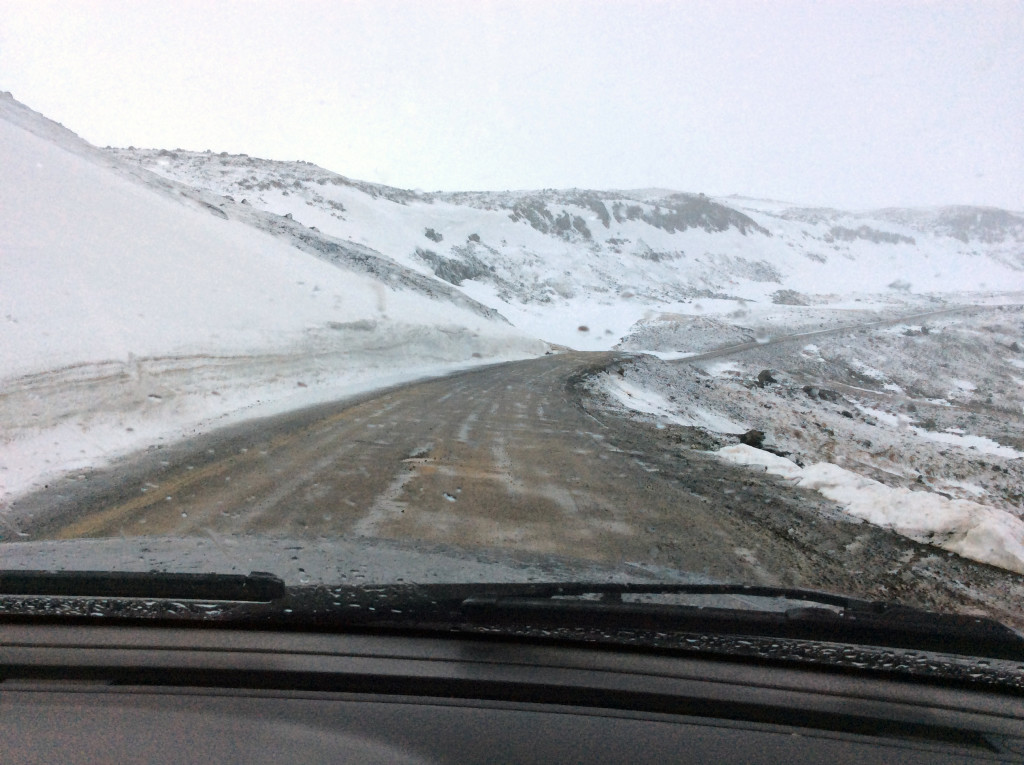
The road to Djúpavík is no picknick.
HA: The pieces in this exhibition are diverse, ranging from conceptual installations to product design, homemade practicalities and studies of using driftwood in architecture. How was the process of putting it all together?
„The underlying idea is design made from driftwood by both Icelandic and international designers as well as craftsmen and women from Strandir. We don’t categorize or label anything although certainly some objects transcend the boundaries of art and design. This was a conscious decision, the core concept is using driftwood as a raw material regardless of industry, method or profession. We also wanted to address the fact that driftwood is barele used in architecture at all, a surprising find.”
HA: The old lathe-machine shop at the herring factory is rather raw and unusual as a exhibition space. Did you have any difficulties setting it up?
“We both fell for that space; the lighting, the rawness and 5 meter ceilings. It’s a rare opportunity to work in a place that has been so untouched by man for almost 80 years. The decision made by the local authorities to preserve it in its normal state with only minimum maintenance is truly an amazing one. Old machinery, rusty shells and bolts sticking out of the walls, even bird nests — everything was allowed to stay exactly as it is.”
To enhance the experience even more we asked composer Hafdís Bjarnadóttir to provide us with a soundscape using natural sounds commonly associated with drift wood. By hanging objects in the ceiling we made use of the unusual room height.

Driftair by Þorleifur Eggertsson & Ólöf Jakobína Ernudóttir along with the exhibition identity by Guðmundur Úlfars.
“One of our main goals was to appeal to the social responsibility and the importance of localised raw material. The idea and image of Icelandic design is vague and lacking definition. Using Icelandic driftwood could be a defining step in solving that image by creating something unique and distinctive.”
HA: Could this be an on-going exhibition?
“That’s a good question. We may keep this project alive in one way or another, maybe moving the exhibition to another place. Last spring we received a grant from the Iceland Design Fund. It will be used to extend the exhibition and to finish a documentary about the whole project. We were lucky enough to get documentary film maker Helga Rakel Rafnsdóttir to oversee the production and direction. There are many possibilities.”

Trog by Lilja Sigrún Jónsdóttir
Hidden Wood has been enormously successful and well received by visitors this summer. HA encourages everybody traveling the West Fjords to stop by and take a look. For those who want more information we suggest to go visit the website of Hidden Wood or contact Hotel Djúpavík which oversees admissions. The exhibition runs until August 28. 2015.
The exhibition features works by the following artists and designers:
- Árni Friðriksson
- Jakob Líndal
- Kristján Ásgeirsson
- Aðalheiður D. Þórólfsdóttir
- Dagný Bjarnadóttir
- Dóra Hansen
- Dögg Guðmundsdóttir
- Cornelius+Vöge
- Emilía Borgþórsdóttir
- Gero Grundmann
- Helga Ragnhildur Mogensen
- Hrafnkell Birgisson
- Júlía Petra Andersen
- Julia Lohmann
- Lilja Sigrún Jónsdóttir
- Patricia Burk
- Ólöf Jakobína Ernudóttir
- Ólöf Birna Björnsdóttir
- Railis Kotlevs
- Sigurjón Pálsson
- Guðrún Jónsdóttir
- Unnur S. Gröndal
- Valgeir Benediktsson
- Þorleifur Eggertsson
- Þórhildur Þorgeirsdóttir..
